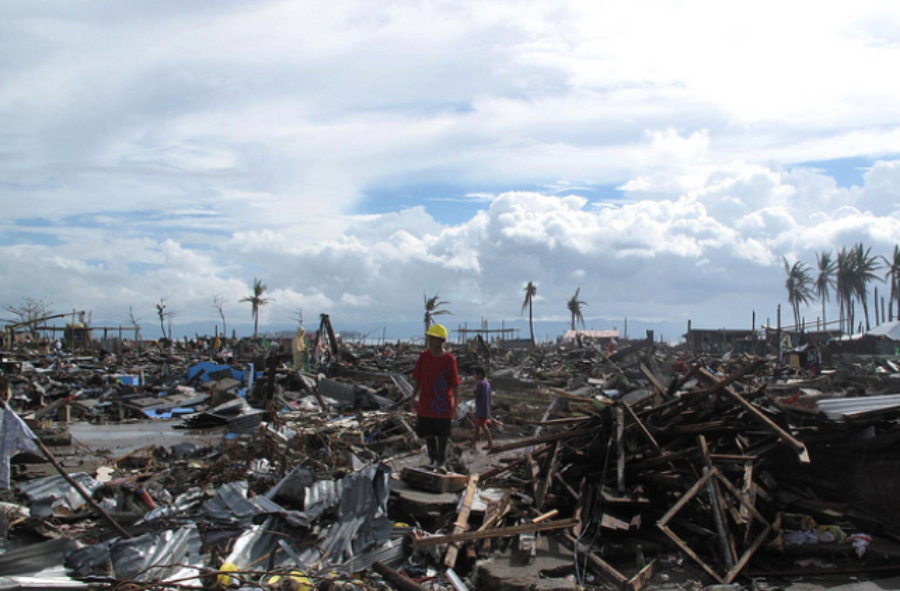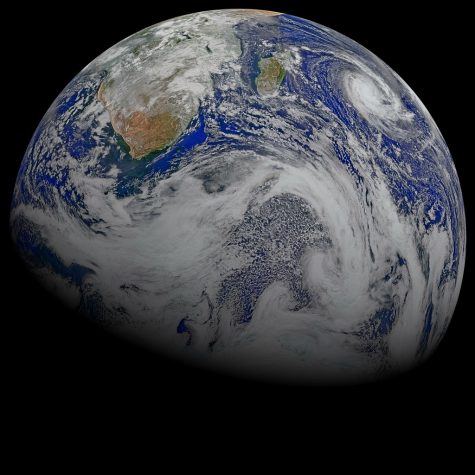Climate change, natural disasters possibly related
Henry Donati via Creative Commons
DESTROYED. A man stands amidst the wreckage of 2013’s Typhoon Haiyan in the city of Tacloban, Philippines. According to CNN, the super typhoon was a Category 5 storm that wreaked havoc across the Philippines and forced about 125,000 people nationwide to evacuate. “We are prepared, but this is really a wallop,” said Gov. Roger Mercado of a province called Southern Leyte, to CNN.
Florence. Michael. Sulawesi. Hurricane, hurricane, earthquake, and tsunami. Around the world, disaster season runs year-round. But what is the driving factor behind the recent uptick in natural disasters? Could climate change play a role?
“I feel like since climate change has become a more prevalent issue and gotten worse, I definitely feel like we’ve been having more natural disasters,” said Kiri Basher, 11.
According to the National Aeronautics and Space Administration (NASA) Earth Observatory, climate change may not be responsible for the myriad recent catastrophes but could be impactful in the future.
Warmer temperatures could cause more water vapor to evaporate into the atmosphere, resulting in a hotter, more humid environment, which will not cause much of a change to the climate at the equator.
At the poles, however, where the air is cold and dry, additional heat and water vapor could raise temperatures significantly. This means that the temperature difference between the poles and the equator will decrease.
According to NASA’s George Tselioudis, a research scientist at the Goddard Institute for Space Studies and Columbia University, this means the number of storms should decrease as well.
However, NASA reports, climate change’s effect on temperatures over land, humidity, and equator-versus-pole temperature differences could altogether increase the number of intense storms.
Increasing global surface temperatures due to climate change also increase the possibility of more droughts, and promote more evaporation wherein water vapor becomes fuel for existing storms to become intensely powerful.
A warmer atmosphere and ocean surface can also lead to higher wind speeds (and, thus, higher intensity) in tropical storms.
And finally, rising sea levels worsen coastal flooding and subject higher, formerly dryer locations to the wrath and erosion of the sea, waves, and currents when those storms occur.
“I know that global warming has caused the ice caps in the North Pole to melt and polar bears might go extinct, which is not good…
“Instead of just turning their cars off, people leave them on to keep them warm, but it’s really affecting the environment,” said Camden Mayhall, 9, of the myriad effects of climate change.
Hopefully, worsened natural disasters will soon cease to be yet another horrific consequence of the planet’s warming.
Sources:














